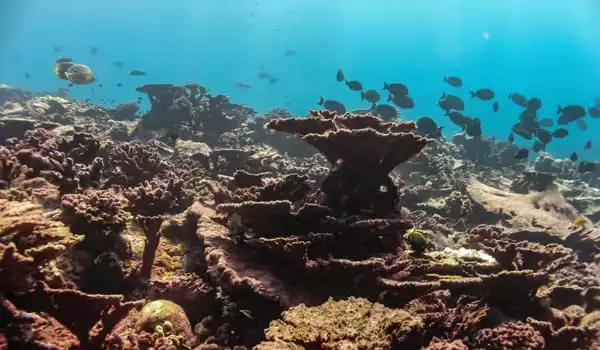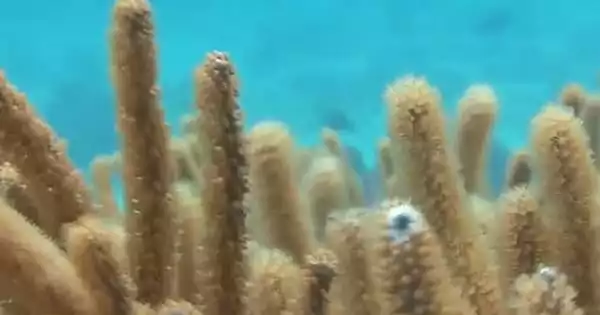A surprisingly large amount of plastic pollution in the water may end up in an unexpected place: the skeletons of living corals. Microplastics exhibited species-specific effects on corals that create tropical reefs. It can impair growth, health, and photosynthetic performance. Microplastics had no effect on the density or chlorophyll concentration of photosymbionts. Community transitions in coral reefs may be facilitated by species-specific impacts.
According to ecologist Jessica Reichert of Justus Liebig University Giessen in Germany, up to 20,000 metric tons of microscopic particles known as microplastics may be stored in coral skeletons worldwide each year. This equates to roughly 3% of the microplastics predicted to be present in the shallow, tropical waters where corals thrive.
Corals have been recorded ingesting microplastics or absorbing them in different ways. However, scientists do not know how much garbage reefs absorb globally. Reichert and colleagues subjected corals in the lab to microplastics to determine where the particles are kept and how much gets tucked away.
Up to 20,000 metric tons of microscopic particles known as microplastics may be stored in coral skeletons worldwide each year. This equates to roughly 3% of the microplastics predicted to be present in the shallow, tropical waters where corals thrive.
Jessica Reichert
Corals can feed in a variety of ways, including particle capture (the tentacles “catching” objects from the water column) and ingestion of dissolved nutrients such as mucus, carbohydrates, amino acids, and microorganisms. Heterotrophy and particle capture are critical for coral health and nutrition, particularly in corals recovering from bleaching. As a result, variables that interfere with coral feeding may have substantial and unanticipated effects for coral fitness.
Corals ate some of the rubbish or grew their skeletons on top of it. The researchers write in Global Change Biology on October 28 that after 18 months, the majority of the debris inside corals was in their skeletons rather than tissues. After counting the trapped particles, the researchers estimate that nearly 6 billion to 7 quadrillion microplastic particles are permanently retained in corals around the world each year.
According to Reichert, this is the first time a living microplastic “sink,” or long-term storage location, has been quantified. Scientists are discovering how much microplastic is entering the waters. However, researchers have no idea where it all ends up. Other recognized microplastic sinks, such as marine ice and bottom sediments, require improved measurement, and new sinks may be discovered.

Reefs are frequently situated near coastlines where contaminated streams can drain into the sea, putting corals in potential microplastic hotspots. “We don’t know what effects this [storage] may have on coral organisms, or on reef structure and integrity,” Reichert adds. It “may represent an extra hazard to coral reefs around the planet.”
In less than a century, humanity’s unrestricted use of plastic has contaminated practically every part of the globe with plastic rubbish, including distant beaches and coasts far from humans (such as those found in the Papahanaumokuekea Marine National Monument). But how much plastic actually makes its way into the water, you ask? Science, on the other hand, has an answer! In 1975, it was estimated (possibly on the back of an envelope…) that 0.1 percent of plastic ended up in the ocean. That’s not awful! Don’t get too excited… that figure is vastly understated.
In reality, 15 to 40% of plastic from dumps, landfills, and trash enters the ocean each year, amounting to 4 to 12 million metric tons of plastic every year! Worse, we still don’t know where all of this trash ends up—only a quarter of it makes it back to shore. The remainder may sink when it is fragmented or colonized by biofoulers, or it may begin a new and eternal voyage as part of the ocean’s plankton, or it may sink to the ocean floor, forming undersea rubbish dumps. Something clearly needs to change…
Our plastic planet’s ramifications for the health and function of ecosystems and organisms are unknown, but it doesn’t take a rocket scientist (or a marine biologist) to understand the potential (and present) harm of plastic garbage on marine ecosystems. We don’t have another 100 years to spend if we don’t reverse our reliance on petroleum (i.e., climate change) and petroleum products (i.e., plastics).





